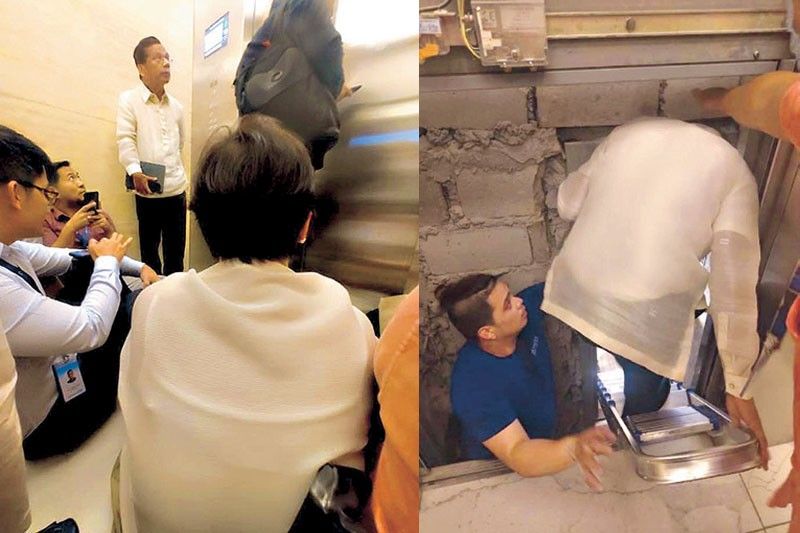PPP Code IRR out; 20 projects up for approval
Louella Desiderio – The Philippine Star March 22, 2024 | 12:00am mages from his Face- book page shows NEDA chief Arsenio Balisacan and his staff trapped inside an elevator in a building in Mandaluyong while on their way to the signing of the IRR of the PPP Code. Balisacan, who described the experience as ‘the […]


Louella Desiderio – The Philippine Star
March 22, 2024 | 12:00am
mages from his Face- book page shows NEDA chief Arsenio Balisacan and his staff trapped inside an elevator in a building in Mandaluyong while on their way to the signing of the IRR of the PPP Code. Balisacan, who described the experience as ‘the longest elevator ride,’ was rescued after over an hour.
STAR / File
MANILA, Philippines — Around 20 solicited projects that are part of the government’s infrastructure flagship program are expected to be submitted to the National Economic and Development Authority (NEDA) Investment Coordination Committee (ICC) for approval this year, the Public-Private Partnership Center said, following the signing of the implementing rules and regulations (IRR) of the PPP Code.
NEDA Secretary Arsenio Balisacan, who almost missed yesterday’s IRR signing as he was stuck for more than an hour in the elevator of a building in Mandaluyong, said the completion of the PPP Code’s rules underscores the government’s commitment to push for infrastructure development.
PPP Center executive director Ma. Cynthia Hernandez said there are around 45 PPPs that are part of the government’s 185 infrastructure flagship projects.
“I think within the year, a substantial number of those would be submitted to NEDA. We’re thinking around 20 to the ICC,” she said.
The PPP Code and its IRR aim to provide a unified legal framework for all PPPs at both national and local levels, clarifying the ambiguities in the Build-Operate-Transfer Law that was last amended in 1994 and other PPP legal frameworks.
As part of the features of the PPP Code, Balisacan said some projects may no longer require the approval of the NEDA Board chaired by the President, if these do not reach the P15-billion threshold.
“The implementing agency can make the determination for PPP directly. But if they require some form of subsidy, like right of way or access to some availability payments, then they would have to still go to the NEDA ICC,” he said.
He said the PPP Code, in effect, can reduce the number of projects going to the NEDA Board for approval and streamline the process.
Hernandez said the PPP Center also expects to receive many unsolicited proposals, with the PPP Code and its IRR providing a clear process for handling these.
She said the PPP Center has so far received and processed over 20 unsolicited proposals since the PPP Code was approved in December last year.
“What the PPP could do and the IRR institutionalizes is that the implementing agencies will act on it,” she said, noting that some previous unsolicited proposals have been in limbo for years.
“So now, while not guaranteeing that the government will actually accept the unsolicited proposal, at least they know that within x number of days, they will know whether the implementing agency would move forward with the proposal and negotiate with them to move the project forward,” she said.














